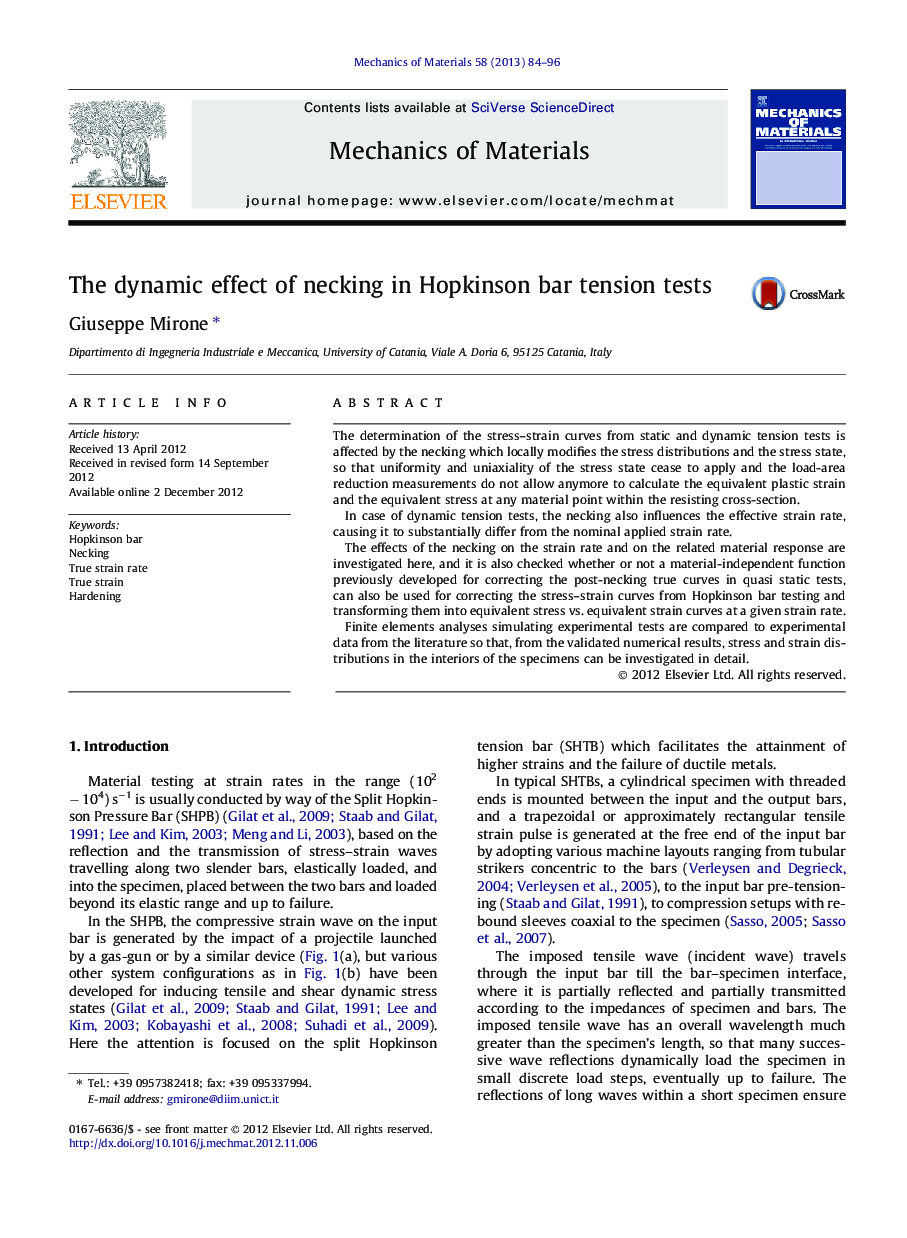| Article ID | Journal | Published Year | Pages | File Type |
|---|---|---|---|---|
| 797593 | Mechanics of Materials | 2013 | 13 Pages |
The determination of the stress–strain curves from static and dynamic tension tests is affected by the necking which locally modifies the stress distributions and the stress state, so that uniformity and uniaxiality of the stress state cease to apply and the load-area reduction measurements do not allow anymore to calculate the equivalent plastic strain and the equivalent stress at any material point within the resisting cross-section.In case of dynamic tension tests, the necking also influences the effective strain rate, causing it to substantially differ from the nominal applied strain rate.The effects of the necking on the strain rate and on the related material response are investigated here, and it is also checked whether or not a material-independent function previously developed for correcting the post-necking true curves in quasi static tests, can also be used for correcting the stress–strain curves from Hopkinson bar testing and transforming them into equivalent stress vs. equivalent strain curves at a given strain rate.Finite elements analyses simulating experimental tests are compared to experimental data from the literature so that, from the validated numerical results, stress and strain distributions in the interiors of the specimens can be investigated in detail.
► The necking-induced strain rate peaks are 5–9 times greater than the nominal value. ► Elongation rate and neck contraction rate affect different stress components. ► The MLR post-necking correction for static tests also applies to dynamic SHTB tests. ► The MLR-corrected material curves only refer to the nominal strain rate.
